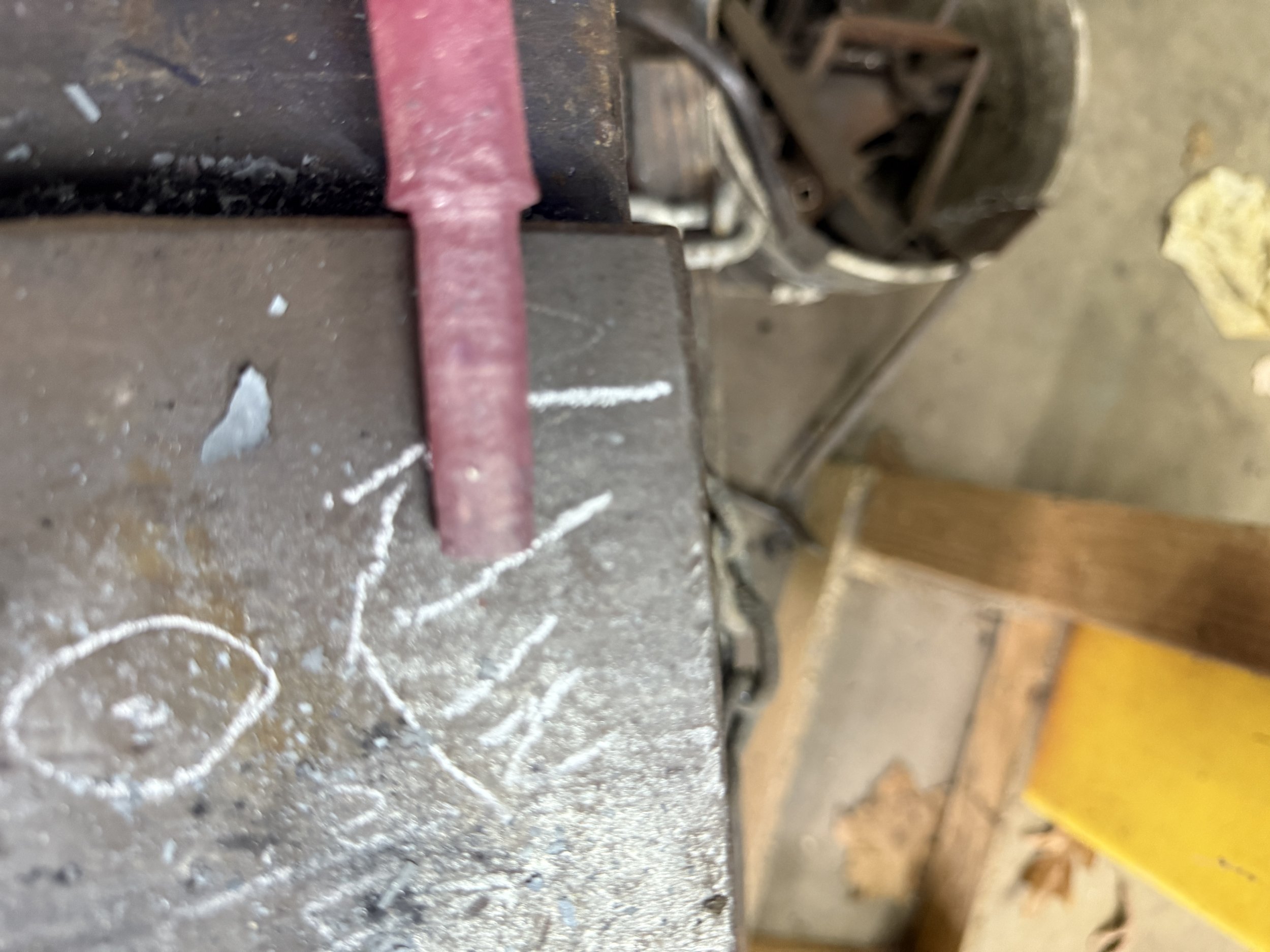Two projects worked on today, More on the rope machine and I finished the line winder. The rope making machine was worked on first, but I will write that up 2nd because the line winder is more exciting.
Finishing the line winder
Quite a while ago I finished all the parts for the line winder, I had made the spike, the string holding base, the top bar, the knob and the spike for the other end of the line. The idea was to attach the top bar with rivets and add the knob by riveting it on the top bar. Then while I was looking at it, i decided to replace one of the rivets with the knob. The bars were drilled and the knob shaped to fit the hole. Both the knob and the rivet were cold riveted. the center post of the winder was then placed in the forge to heat up the top end. The body was then slipped over the heated and and the eye formed. this took a few heats. Once that was done there was nothing left to do but attach some line and go figure out a straight line. Oh, and yes the line on the device right now was some of the rope I made as well.
Working on the rope making machine
Back in the forge again. This time to make the 3rd hook for the rope making machine and to work on the rope winder as well. The 3rd hook was made exactly as the other 2. Starting with a 3/4 in round bar, I marked of an inch from the end. I then took a cutter and marked the point all the way around. With it marked I then used my guillotine to with a 1/2 inch stop to reduce the last inch of the bar to 1/2 in round. I then used a monkey tool to form a crisp shoulder.
once the 1/2 in section was completed an inch of the reduced section eas measured off and marked off. The rest of the section was then reduced again to 1/4 in. The exact same steps were followe dto produce the 2nd step down. Once both steps were completed, 1 1/2 inch was cut off from tthe first shoulder. This section was then drawn down, rounded and shaped into the hook.
Once the 3rd hook was completed, it was time to get back to the line winder.































































































